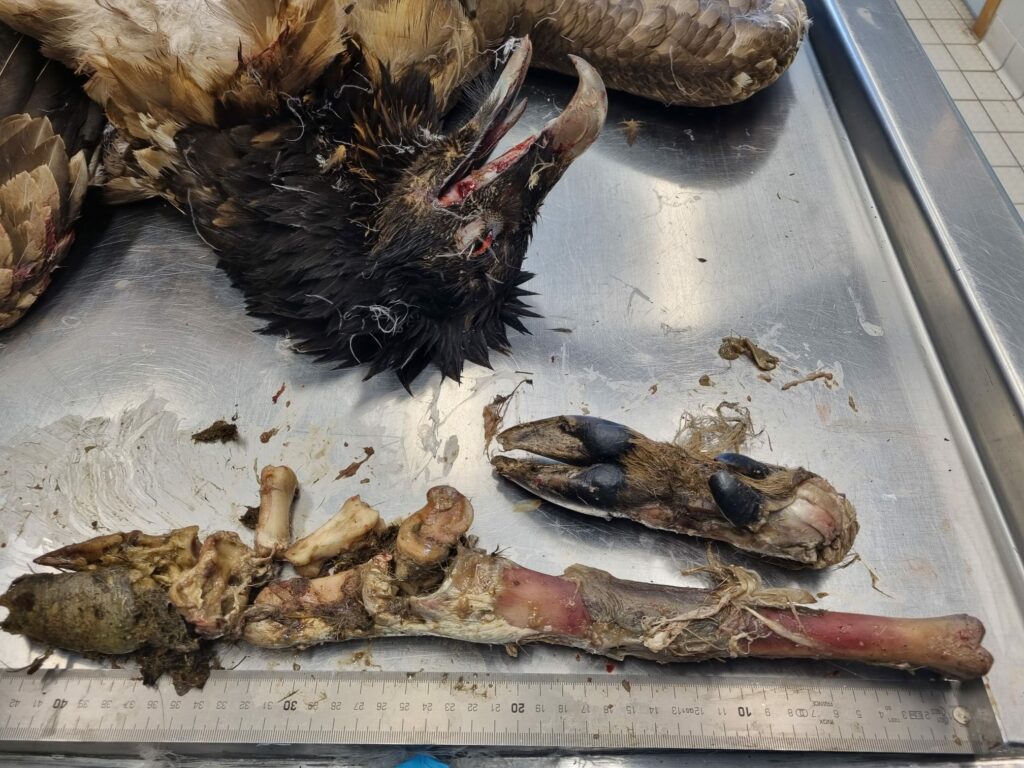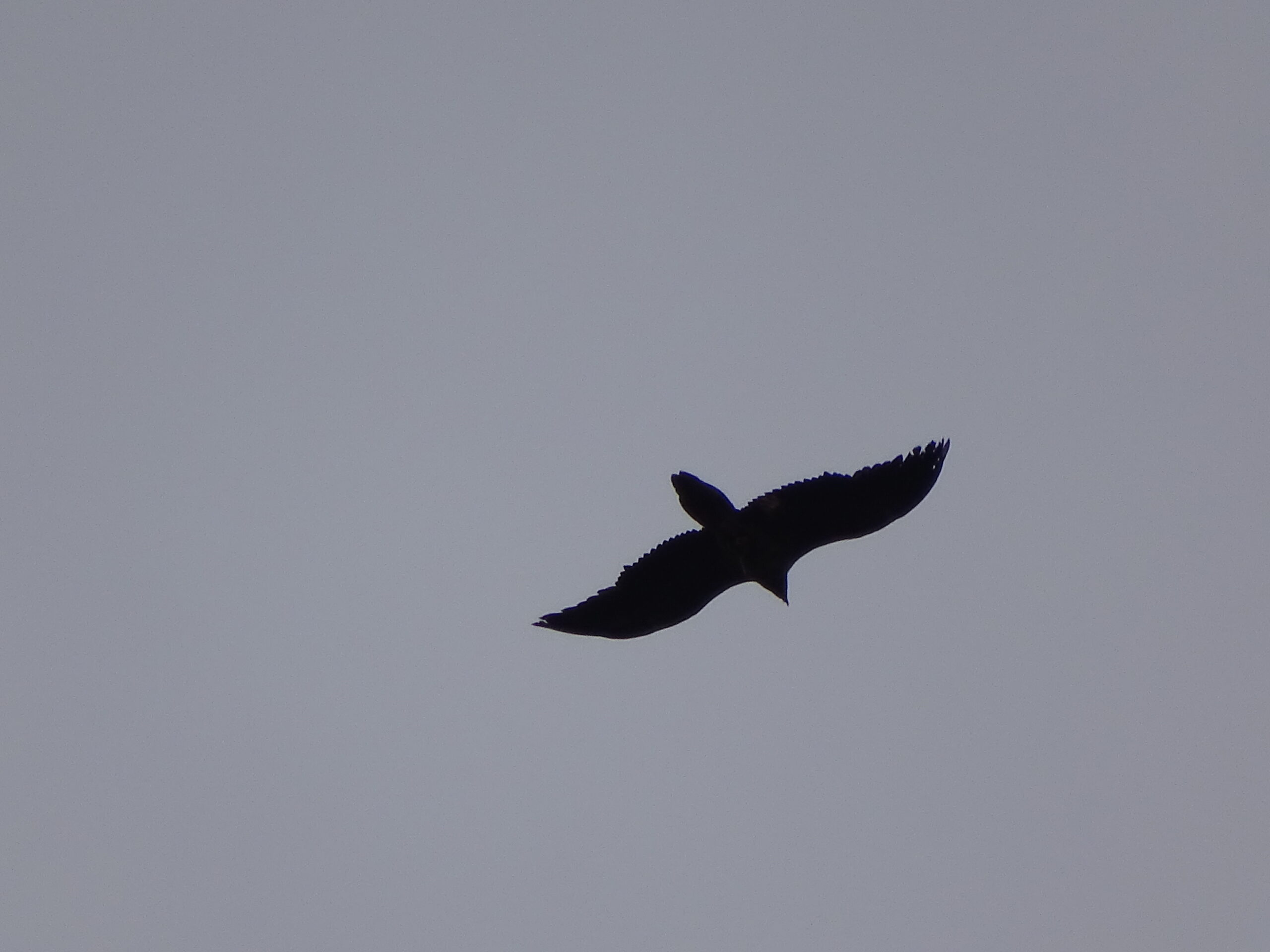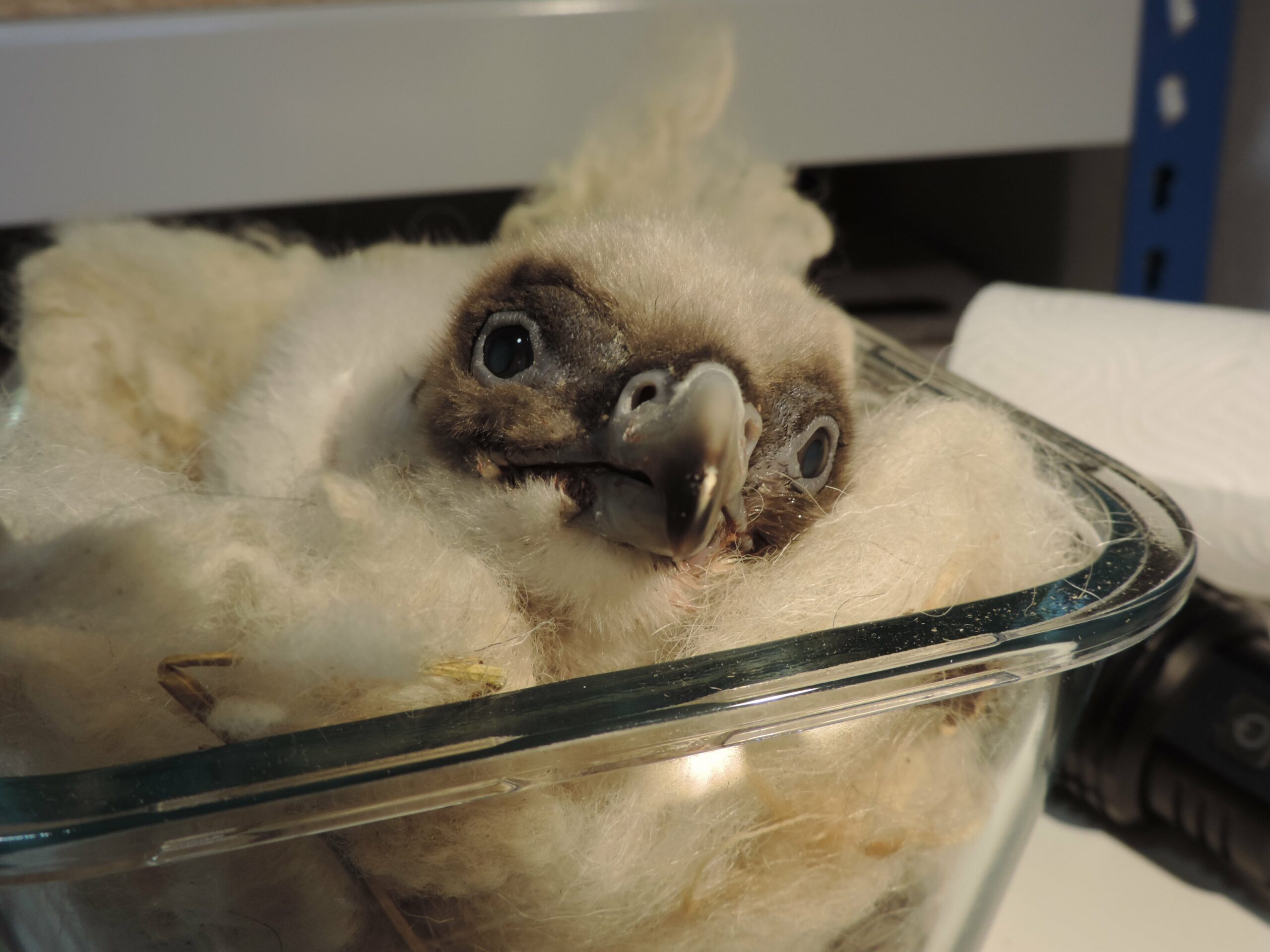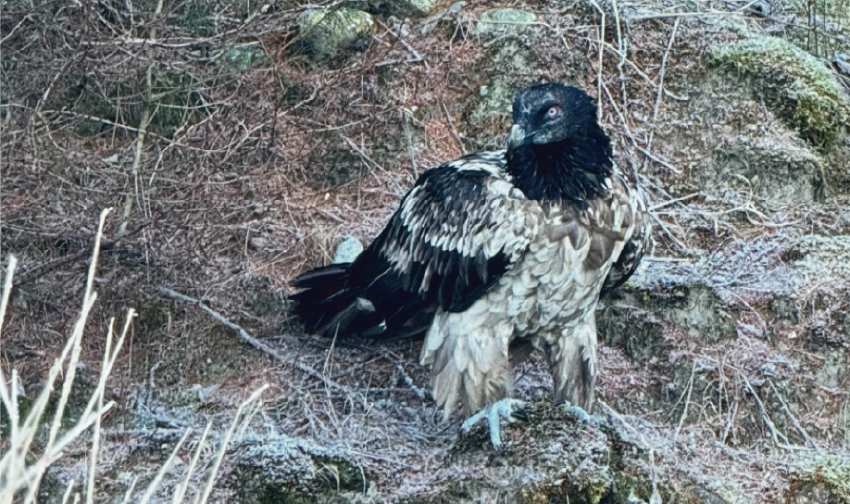Mojo, a female Bearded Vulture from the French Alps, made headlines when she became the first-ever wild-hatched Bearded Vulture observed in the Netherlands. Unfortunately, her life was tragically cut short a few days ago when she was found dead near a train line in the Oostvaardersplassen Nature Reserve, east of Amsterdam. It is a stark reminder of the many challenges that wildlife faces in our built-up world. Let us delve deeper into Mojo’s story, her incredible life, and her heartbreaking death with insights from the necropsy.

A third-generation wild Bearded Vulture from the French Alps
Mojo was a female Bearded Vulture (Gypaetus barbatus) that hatched in the Chambeyron-Ubayette territory of the Mercantour National Park in southeast France in February 2022. She was a third-generation wild bird, with both her parents and two grandparents proven to be wild-hatched birds, a fact known due to the intense monitoring efforts of the Alpine reintroduction programme, coordinated by the Vulture Conservation Foundation (VCF). The International Bearded Vulture Monitoring Network (IBM) uses field observations, GPS transmitters and genetic analyses to closely monitor the population of the species in the region and evaluate conservation measures. In 2022, at 90 days old, Mojo was also tagged as part of this Network, equipped with rings and a GPS transmitter in the nest by Mercantour National Park in collaboration with the VCF.
Ever since leaving the nest, we have been closely monitoring her movements. Mojo explored the Mercantour before leaving the valley and venturing to the Parc National des Écrins, Parc National de la Vanoise, and the Mont-Blanc massif. Between November 2022 and February 2023, Mojo toured the Alps, reaching central Switzerland.
The first wild-hatched Bearded Vulture seen in the Netherlands

In April, after a diversion to central France near Bourges and Dijon, she flew north to the Netherlands, arriving there a few days ago. It is common for young Bearded Vultures to leave their hatching places and explore different habitats. This phase can last several years until the bird settles in a territory around the age of six.
During her brief stay in the Netherlands, Mojo garnered significant interest among birdwatchers, drawing hundreds of people to catch a glimpse of the first-ever wild GPS-tagged Bearded Vulture in the country. From 27-29 April 2023, she was spotted around the Veluwe, Gelderland, where another female Bearded Vulture named Eglazine, captive-bred and released in the Grands Causses, had also spent two consecutive summers (2021-2022), while migrating south for the winters.
Discovering the worst-case scenario
Hans Pohlmann, the VCF’s president who resides in the Netherlands, monitored Mojo’s behaviour closely through field observations and GPS data that records location, temperature, and movement. However, the GPS transmitter suddenly recorded a “flatline” signal, indicating no further movements. Upon closer examination of the location, Pohlmann discovered Mojo along the railroad tracks in the Oostvaardersplassen Nature Reserve. He quickly arrived at the location and discovered Mojo’s tragic fate – she had suffered extensive injuries and was dead. Based on first impressions, with a cloud of feathers lying there, it seemed she was hit by a train and swayed away for about 20 meters. Her head, left wing, and right wing were extensively damaged, and a deer’s foot was still in her throat, showing that she had been feeding before the accident. The impact had pushed her leg through the skin. In the same location, a Cinereous Vulture (Carmen from Baronnies) was also killed by a train in 2005.
Insights into the life and death of Mojo from necropsy results
After Mojo’s premature death, Pohlmann swiftly collected her carcass and brought it to Wageningen University for a post-mortem necropsy. The team of experts who conducted the necropsy provided valuable insights into Mojo’s life before she died. Mojo was found to be in perfect condition with no visible signs of malnutrition. She weighed a healthy 5.5 kg, of which 650 grams was food. The necropsy revealed that she had recently eaten an 18 cm long fresh hoof from a Red Deer. However, what surprised the team was the discovery of another bone, the lower leg of a Red Deer, which was 43 cm long. Together with the 18 cm hoof, there was over 60 cm of bone from her oesophagus to her stomach bottom!

The condition of Mojo’s feathers and claws was perfect, except for damage to some feathers that might suggest it was caused by shooting. Similar damage was present along her right wing and tail, with at least six damaged feathers. Although an X-ray revealed an exceedingly small fragment, it was inconclusive whether it was a gunshot. Unfortunately, Bearded Vulture individuals have been illegally shot in Europe in recent years, and Mojo may have been a victim of this practice.
The necropsy also revealed that Mojo suffered from a severe impact that resulted in her death. It was apparent on initial examination that every bone in her body was broken. Her wings and legs were broken in multiple places, and her skull was cracked and severed from her spine. Blood was found in her beak, and organs inside her body were shattered. The cause of death was determined to be trauma caused by a heavy impact, most likely from the train. Mojo died instantly. Whether there was any effect of chemicals like lead that might have caused the collision needs to be determined in the lab. Samples were taken of the liver, kidney, and muscle for further toxicological analysis, but these will take some time to process.
Restoring Bearded Vulture populations in Europe
We work on multiple conservation projects to reduce Bearded Vultures’ mortality, which is especially challenging for young birds that can wander far from their habitats. Equipping them with GPS transmitters allows us to identify and minimise causes of death. Due to the species’ very slow reproduction, breeding for the first time at the age of 8-10 years old with only one chick surviving every season, these mortalities have a direct impact on population dynamics. Preventing any loss remains a priority to protect Europe’s rarest vulture species, considered Endangered on the continent.
Alongside our partners, we have been reintroducing the species in the Alps since the 1970s, a successful initiative that took a lot of time, investment, and effort. Her death, coupled with the death of another Bearded Vulture, reintroduced Angèle, who died after colliding with a wind turbine in the Netherlands in 2021, highlights the risks that human infrastructure poses to these birds. Despite facing setbacks, the species is making a recovery, with the Alpine population growing and becoming self-sustaining.
We stay committed to restoring the Bearded Vulture population in Europe, with ongoing reintroduction efforts in Andalusia, Massif Central, Pre-Alps and Maestrazgo, and a restocking project in Corsica. Mitigating threats and restoring populations is crucial for the species’ long-term survival.
You can support our efforts by following our work or donating to help us restore Europe’s vultures.



